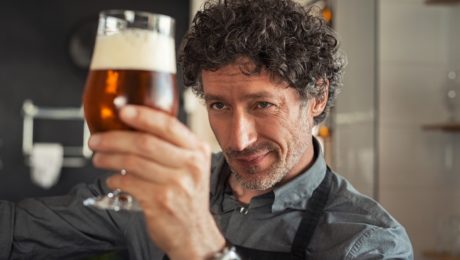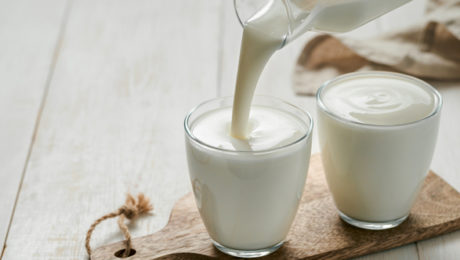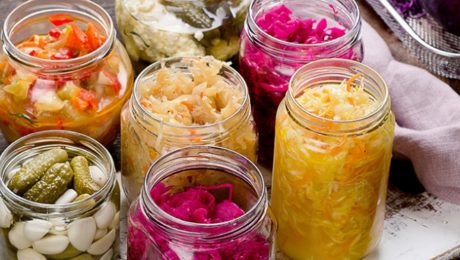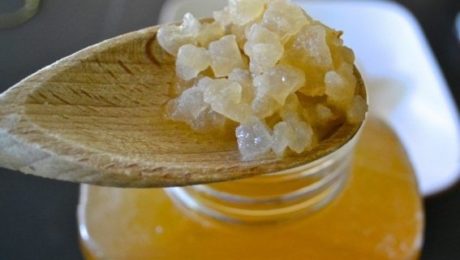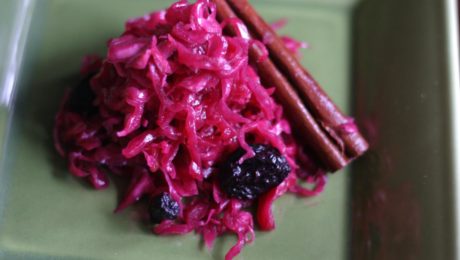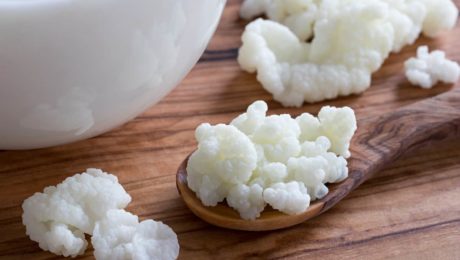Tastier Non-Alcoholic Beer
Though non-alcoholic drinks are growing in popularity, alcohol-free beer has been a laggard. These brews lack the flavorful aroma of hops, with the resulting beverage flat and watery.
Mimicking beer’s flavor profile has been challenging for brewers hoping to appeal to dry drinkers. Some producers add aroma hops in the final stages of brewing, but it’s expensive and wasteful.
“When you remove the alcohol from the beer, for example by heating it up, you also kill the aroma that comes from hops. Other methods for making alcohol-free beer by minimizing fermentation also lead to poor aroma because alcohol is needed for hops to pass their unique flavor to the beer,” says Sotirios Kampranis, a professor in University of Copenhagen’s department of plant and environmental sciences who led the research.
Now researchers from the university have found a possible solution. Their innovation uses baker’s yeast that’s grown in fermenters and releases an aroma of hops. Results of their study were published in the journal Nature.
“After years of research, we have found a way to produce a group of small molecules called monoterpenoids, which provide the hoppy-flavor, and then add them to the beer at the end of the brewing process to give it back its lost flavor. No one has been able to do this before, so it’s a game changer for non-alcoholic beer,” Kamprani says. “When the hop aroma molecules are released from yeast, we collect them and put them into the beer, giving back the taste of regular beer that so many of us know and love. It actually makes the use of aroma hops in brewing redundant, because we only need the molecules passing on the scent and flavor and not the actual hops,” explains Kampranis.
Sustainable Solution
Their discovery represents a potential breakthrough for the overall beer industry because, researchers point out, it could improve beer’s sustainability.
Aroma hops require an enormous amount of water. Over 713 gallons are needed to grow one kilogram of hops. And sourcing fresh hops involves a carbon-heavy supply chain. Hops are farmed mainly on the U.S. West Coast, so trucks and refrigeration units are needed for transportation .
By using baker’s yeast, researchers can create a hoppy flavor without wasting gallons of water and creating carbon emissions.
“With our method, we skip aroma hops altogether and thereby also the water and the transportation. This means that one kilogram of hops aroma can be produced with more than 10.000 times less water and more than 100 times less CO2,” Kampranis says. “Long term, we hope to change the brewing industry with our method – also the production of regular beer, where the use of aroma hops is also very wasteful.”
Kampranis and colleague Simon Dusséaux plan to have the process ready for the brewing industry by this October. The two have founded the biotech company EvodiaBio.
- Published in Food & Flavor, Science
Fermented Dairy Improves Memory
A new study found fermented dairy products reduce memory loss. The study, published in Nutritional Neurosciences, confirms there is a connection between the gut microbiome and the nervous system, known as the gut-brain axis
The adults in the test regularly consumed a dairy-based fermented drink, containing 25-30 billion colony forming units (CFUs). Drinking fermented dairy — like yogurt, kefir or fermented whey — “increased the presence of certain microorganisms in the gut and improved relational memory in healthy adults.”
Read more (Nutritional Neurosciences)
Survey: Fermented Foods and Consumer Behavior
A new study aims to profile consumer habits with fermented foods and beverages. Researchers want to know the types of fermented products that are most popular — and why. To TFA’s knowledge, this is the first major study probing consumer perceptions of fermented foods.
“With this survey we hope to gain a better understanding of the types of fermented foods people are consuming and what motivates them to incorporate fermented foods into their diet,” says Erin DiCaprio, PhD, a food safety expert and extension specialist at UC Davis. “We also want to gather data on the trends related to in-home fermentation and the sources of information the public turns to related to fermented foods. The data we collect will help inform future areas of focus for research and education on fermented foods.”
The study is conducted by the EATLAC project at the University of California, Davis, Department of Food Science and Technology. EATLAC (Evaluating And Testing Lacto-ferments Across the Country), funded by California’s agricultural department, aims to provide accurate information and resources to the public. EATLAC’s directors are DiCaprio and Maria Marco, PhD, microbiologist and professor in the department of food science and technology at the university (and member of TFA’s Advisory Board).
To participate in the 10-minute anonymous survey, follow the link: https://ucdavis.co1.qualtrics.com/jfe/form/SV_0CzKfHUWgX2HHVj
- Published in Food & Flavor, Science
Upcycling Olive Oil, Wine & Beer Byproducts
The olive oil, wine and beer industries each create an enormous amount of waste. Producers, vintners, and brewers dispose of millions of tons of pomace and spent grains every year, often at a big cost.
To a crowd of food industry professionals at Natural Products Expo West, professors at University of California, Davis, shared their research into how these byproducts can be upcycled.
“There’s a lot of waste that can be generated doing agriculture and food processing,” said Selina Wang, PhD, Cooperative Extension Specialist in the Food, Science and Technology department. Globally, good waste is estimated at 140 billion tons a year. “That is a lot, but also a lot of opportunities for us to explore.”
Olive Oil Waste
Wang, who researches small-scale fruit and vegetable processing, says olive oil needs a byproduct solution. Oil is only 20% of an olive’s weight – the other 80% is discarded in olive oil production. Globally, the industry generates 20-30 million tons of olive pomace a year.
What industry, Wang questions, would operate using only 20% of their commodity?
“This is an industry that has been made to use the minor product. But we know there’s a lot of values in the byproduct,” Wang says. Olive pomace has numerous active health compounds which, when consumed, are proven to prevent disease like cancer, Type 2 diabetes and cardiovascular disease. But disposing of this byproduct creates a large carbon footprint. “Can we have a solution to climate change while at the same time improving our health?”
Many producers use the waste as animal feed, giving it away to ranchers. But often, the cost of transportation is too high to justify the benefits. And using olive pomace for compost is not ideal, as it has a negative effect on soil microbes.
In a recent UC Davis study, olive pomace was added to pasta, bread and granola bars, which were then tested for consumer acceptance. Tastes were strong and the grains turned purple when the pomace was added, so the amount of pomace added was low (7% in the pasta and 5% in the bread and granola bars). Consumers didn’t hate the products – they liked them slightly less than the unfortified versions – but the majority said they wouldn’t pay more for the items made with olive pomace.
“I would challenge us to think outside the status quo,” Wang says. “Olive oil was an industry developed with tradition, love and passion. But does it make sense to have an industry where we’re using only 20% of raw material? Or do we actually have an industry focusing on the 80% and the 20% is a wonderful gift we give to family and friends?”
Grape Waste
Further UC Davis studies are also looking at wine byproducts The global wine industry produces 10-13 million tons of grape pomace annually.
That waste is rich in flavonoids and oligosaccharides. UC Davis and Iowa State are currently studying the flavonoids as natural antioxidants and the oligosaccharides as prebiotics, and if they would have a synergetic effect on gut health.
“It basically shows there’s a second life to winemaking and the wine byproduct that’s generated,” she said.
Researchers at UC Davis who have studied feeding cows seaweed to reduce greenhouse gas emissions have proposed to the California Research Dairy Foundation that they use grape pomace instead. It’s cheaper than seaweed and cows burp less after consuming grapes.
Other industries, such as cosmetics, pet food and construction, could also use the byproducts. For example, a new study shows how construction companies could use olive pomace in asphalt paving and building materials.
Brewing Waste
Waste streams are an even bigger problem for the brewing industry, says Glen Fox, PhD, the Anheuser-Busch endowed professor of Malting and Brewing Science at UC Davis. Brewers globally produce over 49 million tons of spent grain a year.
That waste is high in water content (about 80%), but most brewers don’t have the ability to store wet grain. Similar to olive and grape pomace, it’s cheap feed for animals. But the cost of transporting spent grain outweighs the benefits for most breweries.
“At the moment, they’re giving it away,” he says. “They would like to get something back for it.”
Fox sees big opportunities for food producers to use brewing grains, which are packed with nutrients. Compounds can be extracted, such as dietary fiber for supplements, hydrocinnamic acid for makeup and even cellulose pulp for toilet paper. Fox is working on a patent for a process that would allow grains to be applied directly to soil.
The craft brewing industry is “the most viral business in America,” Fox said. There are breweries everywhere – some 9,000 craft brewers in the U.S., with over 1,000 in California alone. But there are not nearly as many food production facilities that can collect the spent grains.
“This industry is in an advantageous position because it has that waste stream every day,” Fox says. “If you want to potentially use this in your business, you don’t have to look far for your supplier.”
When Will the Food Industry Innovate?
“We have to start rethinking our food systems – farm to mouth,” Fox said. “It’s a big challenge.”
There’s no shortage of high-quality research on options for olive oil, wine and beer byproducts, Wang points out. The food industry needs to innovate profitable, desirable products made from upcycled ingredients. At one point whey – a byproduct of cheese production – was dumped down the drain, Wang said. Now it’s a popular protein supplement, in powders and bars.
Two brands are making inroads. Vine to Bar uses grape pomace to make chocolate. ReGrained uses spent beer grains to make pastas, bars and puffs.
“The key is we need to go from a linear economy – which is just made to waste – to a circular economy where we can avoid generating these wastes by upcycling every waste or every byproduct that we generate,” Wang said.
“The World Has Woken Up to Fermentation” — David Zilber
Big food companies are “eager to tap into the magic of fermentation,” says chef David Zilber. They’re hungry to hire culinary experts who can use fermentation to enhance existing products or mold the flavor profiles of new ones.
“These big companies are all waking up to the trend of fermentation and it is on us, on anyone who understands this craft intimately, to be the ones to engage them and guide them towards better solutions,” Zilber said at KojiCon. Fermenters could go the traditional route and open a local shop to feed a small number of people. But “there’s also a lot to be said for working within an existing system and fermenting the change you want to eat in the world. The biggest food producers in the world are responsible for nourishing most of mankind.”
The former head of the Noma fermentation lab, Zilber co-authored The Noma Guide to Fermentation with Noma’s founder Rene Redzepi. In the fall of 2020, Zilber surprised the food world when he left his job at Noma to join Chr. Hansen, a global supplier of bioscience ingredients.
Zilber said he understands the push-and-pull between working in traditional fermentation vs. large-scale food production. Though he cherished his time at Noma, he realized fine dining is “a minuscule fraction of the amount of food people eat” and, if he wanted to influence any big change in the food industry, he needed to move away from restaurants. He compared it to being “the punk rocker that rails against the system” when instead “subverting it from the inside is an amazing way to effect change extremely quickly.”
“When you learn to speak bacteria or when you learn to speak fungus, the hardcore food scientists don’t have this intuition,” he continues. “They grow these things in petri dishes and with colony pickers in €20,000 machines. It’s not the same thing, and we are a little bit at a watershed moment where there is enough community knowledge…that we can start to broach these players and try and change it.”
Streaming into KojiCon from his state-of-the-art kitchen at Chr. Hansen’s Copenhagen headquarters, Zilber shared his latest project: a tomato sauce for a client, improved through fermentation. In his kitchen, he works with chefs and food companies to use fermentation to develop healthier and more sustainable products. Holding up a sample of tomato sauce to the KojiCon attendees, Zilber shared how he was able to amplify the flavor profile of the canned tomato sauce using fermentation. He eliminated added white sugar and created a flavor with hints of parmesan cheese.
“We haven’t added anything but a culture onto it,” he said. “At the end of the day, should this tomato sauce go into production, millions of people overnight will be eating a tastier, probiotic (filled), more nutritious food on their pasta. And I never had to teach them how to lacto-ferment a single thing.”
Chr. Hansen is building one of the largest collections of cultures in the world, currently totalling 40,000 specimens. Zilber describes it as a seed bank, “the Noah’s Ark of Life for microbial diversity.” Chr. Hansen works with companies to select the optimal culture for their food item.
Smaller-scale producers, too, purchase cultures, often to mitigate risk. A fermentation mistake in a one-ton batch of kimchi could destroy thousands of dollars worth of product. Using a guaranteed culture strain will allow them to produce kimchi of consistent quality. But Zilber acknowledges there is no wild fermentation, no son-mat – a common phrase in Korean cooking that literally translates to “the taste of one’s hands.”
“There are aspects of the world of fermentation that are decidedly unwild, there are aspects of the world of fermentation that are nothing but wild,” he says.
Zilber believes we’re in the era of the democratization of fermentation, where books and educational courses are teaching the public about fermentation. He mentioned the new Sex and the City reboot featured a scene where a character was angry that sourdough challah was “too hipster.”
“It’s funny that it’s permeated public consciousness that much where we can now make jokes about it in multi-million-dollar, prime-time television shows. It means that the idea of fermentation in that respect has reached fixation. The world has woken up to this.”
- Published in Business, Food & Flavor, Science
Study: What Bacteria Survive Digestion?
New research has explored how lactic acid bacteria (LAB) in sauerkraut and tibicos survive digestion and change gut microbiota composition.
This work, published in Frontiers in Microbiology, investigated how a fermentation production process affects LAB and yeast microbial viability and probiotic potential. Though there are studies that demonstrate health benefits of fermented foods, few “explore how being part of a whole fermented food matrix affects microbial viability during fermentation, storage and gastrointestinal (GI) transit.”
The study focused on non-dairy, botanical fermented foods, defined as “microbially transformed plant products rich in health-promoting components.” Tibicos and sauerkraut were chosen because recent research had found the microbial diversity of the two ferments “far exceeded that of dairy-based ferments, as well as containing the largest numbers of potential health-promoting gene clusters.” The tibicos studied was sugar-based while the sauerkraut was brine-based, and both contained various strains of LAB and bioactive components.
Ginger, cayenne pepper and turmeric added to tibicos were all found to have different survival rates in the digestion tract. These functional spices are often added to fermented products for their anti-inflammatory and sensory properties, but their microbial proliferation had never been adequately explored. Cayenne was the clear winner, as adding it to tibicos “significantly improved the survival rate of LAB during simulated gastric and small intestinal digestion compared to ginger and turmeric.” Ginger in tibicos had a higher rate of LAB survival than turmeric, though neither had a significantly higher LAB survival rate than plain tibicos. But adding ginger significantly increased and sustained microbial viability of LAB.
The research team — from University of Melbourne — did not perform the study on human subjects, but simulated upper gastrointestinal digestion and colonic fermentation tests using pig feces.
Some other significant findings:
- For an optimal microbial survival rate of 70-80%, tibicos should be consumed within 28 days, and sauerkraut within 7 weeks.
- Sauerkraut made with different salt concentrations did not show any significant variation in LAB counts.
- Inoculating sauerkraut with a starter culture increased LAB counts during fermentation and storage. But, by the end of storage, the LAB counts in the inoculated sauerkraut “dropped to undetectable levels.”
- Spontaneously-fermented sauerkraut LAB counts remained stable through the storage period.
“Botanical fermented foods are cheap, easily made, and consumed globally,” the study concluded. “This makes them excellent candidates for the dietary management of pro-inflammatory noncommunicable diseases, such as type 2 diabetes and metabolic syndrome.
“Bacterial Bully” Could Create Healthier & Tastier Fermented Foods
Microbiologists have long considered that there are two distinct categories of energy conservation in microorganisms: fermentation and respiration. Lactic acid bacteria (LAB) use fermentation, making it central to food and drink production and preservation since the dawn of man.
But researchers at the University of California, Davis, and Rice University discovered a LAB species that uses a hybrid metabolism, combining both fermentation and respiration.
“These are two very different things, to the extent that we classify bacteria as basically one or the other,” said Caroline Ajo-Franklin, a bioscientist at Rice University and co-author of the study. “There are examples of bacteria that can do both, but that’s like saying I can ride a bicycle or I can drive a car. You never do both at the same time.”
“What we discovered is a LAB that blends the two, like an organism that’s not warm- or cold-blooded but has features of both,” she said. “That’s the big surprise, because we didn’t know it was possible for an organism to blend these two distinct metabolisms.”
The species — lactiplantibacillus plantarum — is what scientists call a bacterial bully because it takes advantage of two distinct metabolic processes, according to a press release from Rice on the study. These systems were “not previously known to coexist to acquire the fuel they burn for energy.”
“Using this blended metabolism, lactic acid bacteria like L. plantarum grow better and do a faster job acidifying its environment,” said Maria Marco, a professor in the food science and technology department at UC Davis and the study’s co-author [and a TFA Science Advisor].
The discovery is significant for food and chemical production. New technologies that use LAB could now produce healthier and tastier ferments, minimize food waste and change the flavors and textures of fermented food.
“We may also find that this blended metabolism has benefits in other habitats, such as the digestive tract,” Marco said. “The ability to manipulate it could improve gut health.”
The study began with a puzzle: the realization that genes responsible for the electron transfer pathway in mainly respiratory organisms also appear in the LAB genome. “It was like finding the metabolic genes for a snake in a whale,” Ajo-Franklin said. “It didn’t make a lot of sense, and we thought, ‘We’ve got to figure this out.’”
While the Davis lab studied the genome, the team at Rice carried out fermentation experiments on kale.
“It wasn’t our first choice,” said Rice alumna and co-lead author Sara Tejedor-Sanz (now a senior scientific engineer in the Advanced Biofuels and Bioproducts Process Development Unit at Lawrence Berkeley National Lab).
“We performed some initial experiments with cabbage, since that’s a known fermented food — sauerkraut and kimchi — in which lactic acid bacteria are present,” she said. “But there were technical difficulties and it didn’t turn out so well. So we looked for another food to ferment where LAB could be found in its ecological niches.
“Kale has compounds like vitamins and quinones that lactic acid bacteria use as cofactors in their metabolism, and are also involved in interacting with the electrodes,” she said. “We also found fermenting kale to make juice was a trend. It sounded perfect for our biochemical reactors.”
The study showed LAB enhances metabolism through a FLavin-based Extracellular Electron Transfer (FLEET) pathway that expresses two genes (ndh-2 and pp1A) associated with iron reduction, a step in the process of stripping and incorporating electrons into ATP (adenosine triphosphate (ATP), energy-carrying molecule).
Because LAB’s genome has evolved to be small, thus requiring less energy to maintain, the wide conservation of FLEET must serve a purpose, Ajo-Franklin said.
“Our hypothesis is this helps bacteria get established in new environments,” she said. “It’s a way to kick-start their metabolisms and outcompete their neighbors by changing the environment to be more acidic. It’s being a bully.”
That the FLEET pathway can be triggered with electrodes offers many possibilities, she said. “We found we can use the hybrid metabolism in food fermentation,” Ajo-Franklin said. “Now we have a way to change how food may taste and avoid failed food fermentations by using electronics.”
“We may also find that this blended metabolism has benefits in other habitats, such as the digestive tract,” Marco said. “The ability to manipulate it could improve gut health.”
Ajo-Franklin noted LAB are commonly found in the microbiomes of many organisms, including humans. “You can already buy it in health food stores as a probiotic,” she said. “The human gut is an anaerobic environment, so LAB have to keep a redox balance. If it oxidizes carbon to gain energy, it has to figure out a way to reduce carbon somewhere else.
“Now we think if we provide another electron donor or acceptor, we could promote the growth of positive bacteria over negative bacteria.”
UC Davis graduate student Eric Stevens is co-lead author of the study. Co-authors are Rice graduate student Siliang Li; at UC Davis, graduate students Peter Finnegan and James Nelson, and Andre Knoesen, a professor of electrical and computer engineering, at UC Davis; and Samuel Light, the Neubauer Family Assistant Professor of Microbiology at the University of Chicago.
Ajo-Franklin is a professor of biosciences and a CPRIT Scholar. Marco is a professor of food science and technology.
The National Science Foundation, Office of Naval Research, the Department of Energy Office of Basic Energy Sciences and a Rodgers University fellowship supported the research.
The study results were published in the journal eLife.
- Published in Food & Flavor, Health, Science
Analyzing the World’s Fermented Beverages
Can indigenous fermented beverages play a prominent role in a healthy diet? Biochemists studied four commercial products – kefir and ryazhenka from Russia, amasi and mahewu from South Africa. Their research was published in the journal Foods.
Researchers from the Institute of the Research Center of Biotechnology of the Russian Academy of Science (RAS) and South Africa’s Durban University of Technology discovered key elements of the fermented drinks. The three that are milk-based had more antioxidants than the corn-based one, while the corn drink (mahewu) was “better at suppressing the angiotensin-converting enzyme.” Kefir and ryazhenka, meanwhile, have a more diverse composition of fatty acids.
“Usually, food is considered only as a source for sustenance. However, more and more people (are starting) to believe that it also should preserve and improve health,” Konstantin Moiseenko, co-author of the study and a research fellow at RAS in Moscow. He notes modern science allows “mankind to look differently at the usefulness of traditional, centuries-old foods. Our research focuses on fermented products, which regular consumption can potentially prevent atherosclerosis, hypertension and thrombosis.”
Read more (Lab Manager and Foods)
Evidence of Fermented Health Benefits
We’re on the cusp of a new generation of health-promoting foods, foods that will harness the power of microbes present in fermented foods and beverages.
Paul Cotter, head of Food Bioscience Department at Teagasc Food Research Centre in Ireland, envisions a future system where fermented foods are made with strains having scientifically-proven health-promoting benefits. His lab is integrating microbiome and metabolic data and using DNA sequencing to drill down to specific health benefits.
“We’ve really only scratched the surface as to the real potential of all those different microbes and what they could be doing,” says Cotter, who is also the principal investigator with the APC Microbiome Ireland. “Whether a particular food is health promoting or not will be dictated by what microbe is in there and can only be proved by carrying out the appropriate studies.”
Cotter was a speaker at TFA’s conference FERMENTATION 2021. He made a case for establishing minimum standards for fermented foods and beverages. In his scenario, kombucha or kefir couldn’t be labeled as such without using a scientifically-backed combination of microbial strains.
“That ensures that the kind of pseudo fermented foods — the foods that are fermented but not really with the right microbes — don’t get on the market or can’t be distinguished,” Cotter says.
Not all Fermented Foods are Equal
There is scientific evidence of the health benefits of frequently and regularly consuming fermented foods and beverages. They can prevent illness, provide a source of live and active microbes, improve the digestibility of foods, increase certain vitamins and bioactive compounds and remove or reduce toxic compounds like lactose.
“Ultimately, I’m a scientist and so I want to see proof that underpins the claims associated with a particular food,” Cotter says. “While there’s a lot of good information out there, I think also some of the claims are doing a disservice to the fermented food industry and to those who make fermented foods in their homes because they’re overstating the potential health benefits.”
Problematic, too, are fermented foods made with shortcuts and additives. Cotter’s lab is currently studying kefir, and they found that not all are equal. Traditional kefir has been documented as helping to reduce weight and improve cholesterol and liver triglyceride levels. But some brands of commercial kefir they studied didn’t produce those same health benefits. And they found that some of the kefir on the market was nothing more than watered-down yogurt.
“Consumer beware: the benefits weren’t the same for each kefir and differ depending on what the microbes present in the kefir were,” says Cotter, a self-described fermented foods nerd. ”I think that’s a problem for lots of other fermented foods too, and I really feel for consumers who don’t have a microbiological background and are reading a label and assuming that they are consuming a fermented beverage or fermented food that has lots of beneficial microbes in there and is made in the artisanal way that that food has been made over hundreds of different years.”
What are the health benefits?
Cotter’s lab has used in-depth analyses to detail the microbial composition of a food, including naming the microorganisms present and their capabilities. They’ve identified “completely novel species that had never been found previously,” Cotter says. An example is African fermented food, which contains a huge diversity of microbes, including ones not typically found in fermented foods in the West.
The highest level of what’s called “Health Associated Gene Clusters” are in fermented foods, specifically those brine- (like sauerkraut and kimchi) or sugar-based (kefir and kombucha). Cotter notes the genes in fermented foods are health promoting because the microbes are closely related to probiotics.
“What we can do is to try to harness the microbes that are present and use them in a way that facilitates large-scale production,” Cotter says.
Covid & the 4k’s: 4 Foods “Many People Don’t Know About”
Renowned professor, epidemiologist and author of The Diet Myth and Spoon Fed Tim Spector is encouraging people to eat the 4k’s: kefir, kombucha, kimchi and kraut. His studies found diet plays a role in preventing severe symptoms of Covid.
Spector is a leading expert on long Covid, the symptoms that can continue for extended periods after an initial infection. He leads the ZOE Covid Study, created by scientists and doctors at King’s College London (where he is based), Stanford, Harvard, Massachusetts General Hospital and health science company ZOE. Last year Spector helped research the attributes and predictors of long Covid, the results of which were published in the journal Nature Medicine.
A microbiome researcher, Spector advocates for people to eat a diverse diet to improve the trillions of microbes in the gut.
“We know from Covid now that your gut health is crucial for your immune system,” he told ITV. “If we can focus on our gut health…gut microbiome is really crucial.”
Diet must be high-quality to improve immunity, he stresses. In the ZOE Covid study, researchers have found eating “the right things and avoiding feeding (the gut) the bad things, that’s what made the difference to getting long Covid,” he said. Fermented foods have proven health benefits, but Spector says many people opt for cheaply-made yogurts and cheeses prevalent in the grocery store to get their daily dose of fermented foods. This dairy is full of sugar and artificial ingredients, which thwart the positive effects of fermentation.
“The other fermented foods that many people don’t know about are what I call the 4 k’s,” Spector says: kefir, kombucha, kimchi and kraut (sauerkraut). He encourages “small shots a day” of a fermented food or beverage. “That really is a powerful enhancer of your microbes. And all these things are going to be cheaper actually than taking multivitamins every day of your life.”
Spector is not a fan of supplements, like pill forms of vitamins and nutrients. Many are proven not to work, he explained. In his studies on the effects of supplements on long Covid, there were minimal benefits for women and none for men.
“People are much better off getting all their vitamins and nutrients by having a diverse diet,” Spector said.
- Published in Food & Flavor, Science

